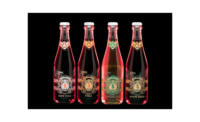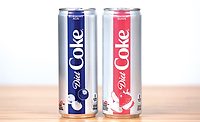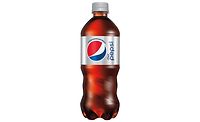When it comes to consumer penetration, carbonated soft drinks (CSDs) still are a behemoth within the U.S. beverage market. In its April 2017 report titled “Carbonated Soft Drinks – US,” Chicago-based Mintel notes that the category has a penetration of about 90 percent. Yet, with declining sales, analysts suggest that more innovation is needed to help the mature beverage category.
“In particular, suppliers will need to meet the demand for more-healthful options, varied flavors and added benefits,” the report states. “Effective engagement with iGeneration and millennials, which are increasingly ethnically diverse populations, will be central to future sales growth.”
The reason for the urgency to innovate the CSD market has been documented by the category’s multiple years of declines.
“Carbonated soft drink volume declined once again in 2017,” said Gary Hemphill, managing director of research for New York-based Beverage Marketing Corporation (BMC), in Beverage Industry’s April issue. “Volume declined a little more than 1 percent based on our preliminary data. The decline is consistent with performance in recent years. Carbonated soft drink volume has now declined for 13 consecutive years.”
Catherine Krol, research analyst for Chicago-based Euromonitor International, also noted the challenges experienced throughout the CSD market.
“Carbonates total value sales stagnated in 2017, indicating a worsening perception of carbonated soft drinks overall,” she said in Beverage Industry’s April issue. “While there were some bright spots from ginger ale and tonic water, the overwhelming majority of the market recorded continuing lows.”
(By flavors)
| 2016 MILLIONS OF GALLONS | MARKET SHARE | % CHANGE VS. PRIOR YEAR | |
| Cola* | 6,383.6 | 51.2 | -2.6 |
| Heavy citrus | 1,480.7 | 11.9 | -0.5 |
| Lemon lime | 1,236.1 | 9.9 | 0.9 |
| Pepper | 1,246.6 | 10 | 0.5 |
| Orange/flavors | 564.6 | 4.5 | 3.6 |
| Root beer | 413.2 | 3.3 | -1.1 |
| Other | 1,093.3 | 9.1 | 4.0 |
| Category total* | 12,461.5 | 100.0 | -0.8 |
Note: Includes packaged and fountain, regular and diet CSDs.
Source: Beverage Marketing Corporation.
Krol added that 2017 recorded the lowest decline for CSDs since 2013, suggesting more challenges await the category.
“As cola carbonates continue to decline at the usual rate, the contributing factor to this greater decline can be attributed to non-cola carbonates, as this is the first year they have posted negative growth rates,” she said. “The health-and-wellness movement has contributed to a lot of the decline in low-calorie CSDs, but 2017 has shown that full-calorie carbonates are not immune.”
With regular and low-calorie CSDs showing declines in 2017, Krol noted that practices that previously helped brand owners stem the tide might not be as effective this time around.
“Regular CSDs continued to decrease in 2017, but not at the rate at which low-calorie CSDs were declining,” she said. “Low-calorie CSDs have been free-falling in both value and volume for the last several years. The interesting trend is that value sales of regular CSD are beginning to slip, potentially signaling that the current effect of value-adding strategies in carbonates may be waning.”
Although the CSD market is facing a battle on many fronts, Krol noted that manufacturers have utilized smaller pack sizes to offset volume declines as well as diversity among premium products.
Atlanta-based The Coca-Cola Co. and PepsiCo Inc., Purchase, N.Y., also are addressing CSD declines through sweetener exploration.
“Stevia has been interrupting the health-and-wellness space, offering a zero-calorie product, which is both natural and sweet,” Krol said. “Overall, high-intensity sweeteners have experienced a large growth over the last couple of years, offering consumers an alternative to aspartame-like artificial sweeteners that is both sweet and beneficial to them. Pepsi and Coca-Cola have been busy performing [research and development] to develop a stevia-sweetened carbonate that appeals to the widest variety of consumer tasting palates as the current use of stevia/erythritol is described by some consumers as ‘bitter.’”
Noting the poor performance seen across the diet CSD segment, BMC’s Hemphill stated that emerging sweetener solutions will be vital for the category’s future.
“Consumers appear dissatisfied with the current crop of diet sweeteners and are consuming less of the products and, in some cases, moving out of the category entirely,” he said. “We believe companies are responding with some taste improvements with diet sweeteners that could begin to improve the performance of the category.”
Krol also thinks that the craft soda segment could pose potential for the CSD market.
“As craft sodas begin to evolve and gain popularity, orange and other tropical flavored carbonates may have the power to reach other untraditional demographics, leading to higher gains,” she said. BI




